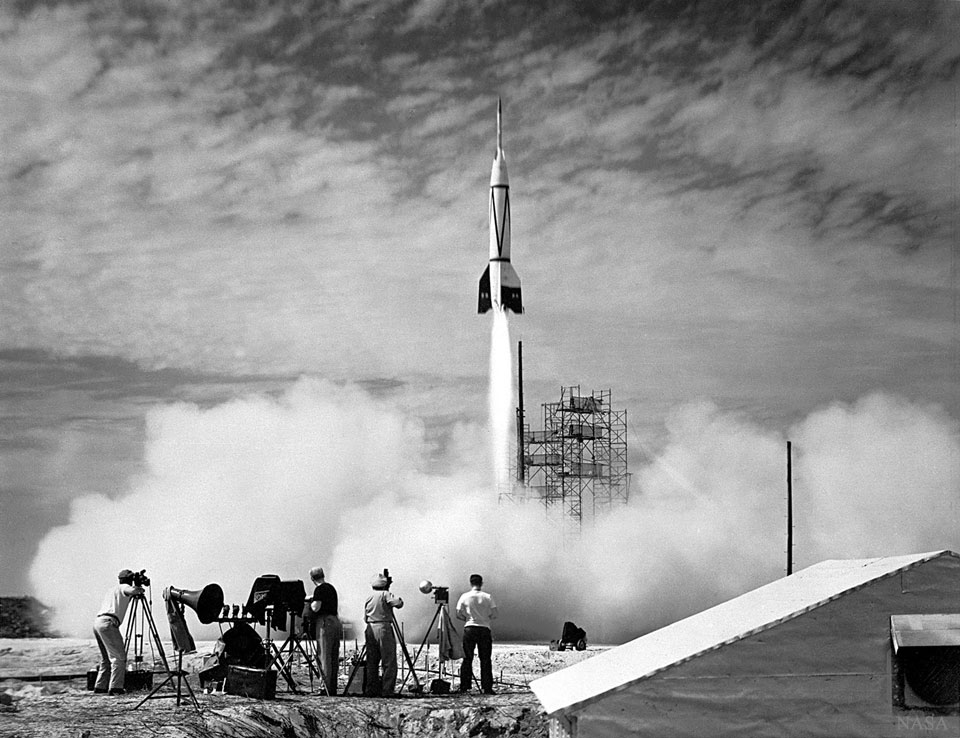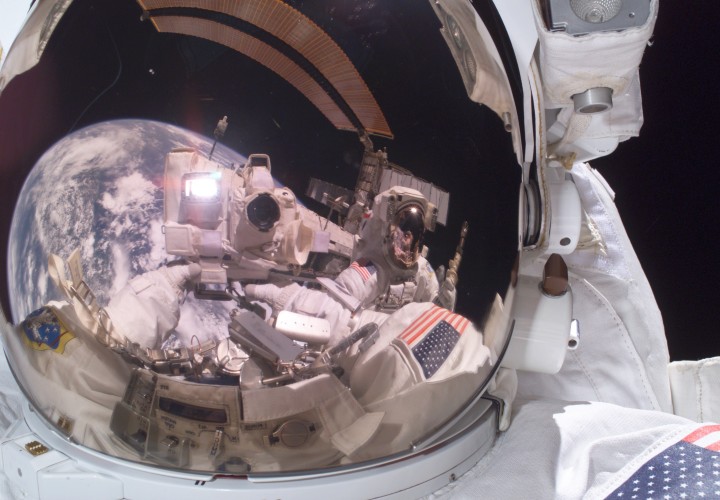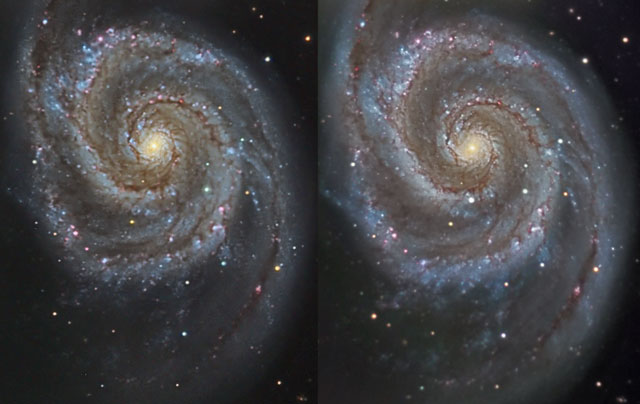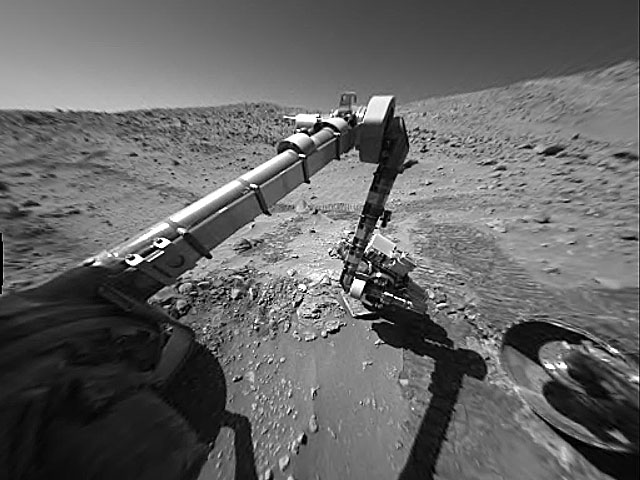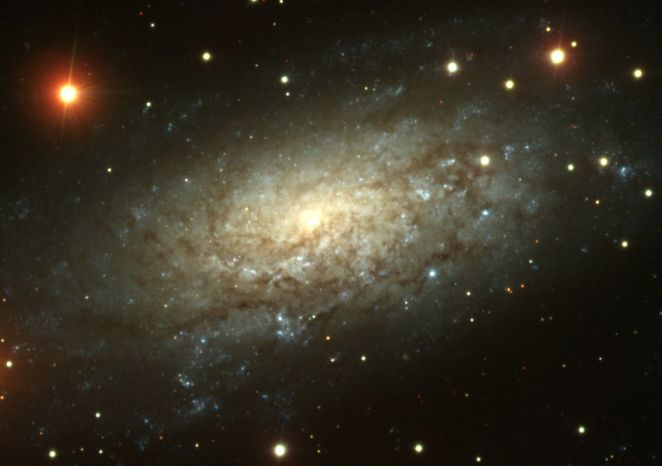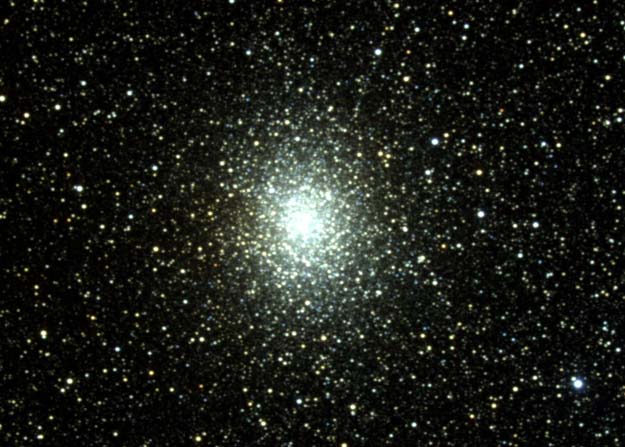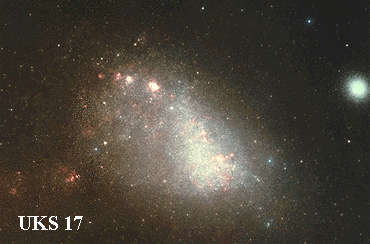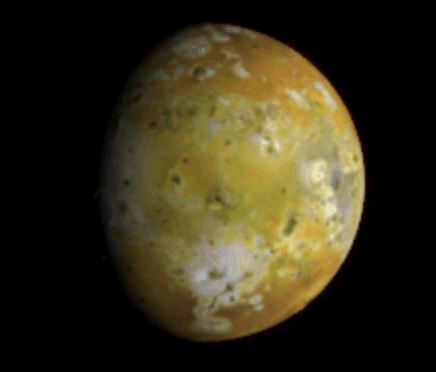| << Previous | Index | Next >> |
2015 A new chapter in space flight began this week in 1950 July with the launch of the first rocket from Cape Canaveral, Florida: the Bumper V-2. Shown above, the Bumper V-2 was an ambitious two-stage rocket program that topped a V-2 missile base with a WAC Corporal rocket. The upper stage was able to reach then-record altitudes of almost 400 kilometers, higher than even Space Shuttles once flew. Launched under the direction of the General Electric Company, the Bumper V-2 was used primarily for testing rocket systems and for research on the upper atmosphere. Bumper V-2 rockets carried small payloads that allowed them to measure attributes including air temperature and cosmic ray impacts. Seven years later, the Soviet Union launched Sputnik I and Sputnik II, the first satellites into Earth orbit. In response in 1958, the US created NASA.
2014 In this beach and skyscape from Alicante, Spain, July's Full Moon shines in the dark blue twilight, its reflection coloring the Mediterranean waters. Near the horizon, the moonlight is reddened by its long path through the atmosphere, but this Full Moon was also near perigee, the closest point to Earth along the Moon's elliptical orbit. That made it a Supermoon, a mighty 14% larger and 30% brighter than a Full Moon at apogee, the Moon's farthest orbital swing. Of course, most warm summer nights are a good time to enjoy a family meal oceanside, but what fish do you catch on the night of a Supermoon? They must be Moon breams ...
2013 Take a picture of Saturn in the sky tonight. You could capture a view like this one. Recorded just last month looking toward the south, planet Earth and ruins of the ancient temple of Athena at Assos, Turkey are in the foreground. The Moon rises at the far left of the frame and Saturn is the bright "star" at the upper right, near Virgo's alpha star Spica (picture with labels). If you do take a picture of Saturn or wave at Saturn and take a picture, you can share it online and submit it to the Saturn Mosaic Project. Why take a picture tonight? Because the Cassini spacecraft will be orbiting Saturn and taking a picture of you.
2012
[imghover6=http://apod.nasa.gov/apod/image/1207/AC ... ade900.jpg]http://apod.nasa.gov/apod/image/1207/AC ... belled.jpg[/imghover6]Image Credit & Copyright: Alex Cherney (Terrastro, TWAN)
2011 What does the surface of asteroid Vesta look like? The brightest asteroid in the Solar System and the object which takes up about 10 percent of the entire mass of the main asteroid belt had never been seen up close before. Over the past few weeks, however, the robotic Dawn spacecraft became the first spacecraft ever to approach Vesta. A few days ago, just after attaining orbit, Dawn took the above image. Early images show Vesta to be an old and battered world, covered with craters, bulges, grooves, and cliffs. Studying Vesta may give clues to the formative years of our early Solar System, as the unusual world may be one of the largest remaining protoplanets. After a year of studying Vesta, Dawn is scheduled to leave orbit and, in 2015, approach the only asteroid-belt object that is larger: Ceres.
2010 A Dark River of dust seems to run from our Galactic Center, then pool into a starfield containing photogenic sky wonders. Scrolling right will reveal many of these objects including (can you find?) the bright orange star Antares, a blue(-eyed) horsehead nebula, the white globular star cluster M4, the bright blue star system Rho Ophiuchi, the dark brown Pipe nebula, the red Lagoon nebula, the red and blue Trifid nebula, the red Cat's Paw Nebula, and the multicolored but still important center of our Galaxy. This wide view captures in exquisite detail about 50 degrees of the nighttime sky, 100 times the size of the full Moon, covering constellations from the Archer (Sagittarius) through the Snake Holder (Ophiuchus), to the Scorpion (Scorpius). The Dark River itself can be identified as the brown dust lane connected to Antares, and spans about 100 light years. Since the Dark River dust lane lies only about 500 light years away, it only appears as a bridge to the much more distant Galactic Center, that actually lies about 25,000 light years farther away.
2009 After the most famous voyage of modern times, it was time to go home. After proving that humanity has the ability to go beyond the confines of planet Earth, the first humans to walk on another world -- Neil Armstrong and Buzz Aldrin -- flew the ascent stage of their Lunar Module back to meet Michael Collins in the moon-orbiting Command and Service Module. Pictured above on 1969 July 21, the ascending spaceship was captured by Collins making its approach, with the Moon below, and Earth far in the distance. Tomorrow marks the 40th anniversary of the first human moon landing. Recently, NASA's moon-orbiting Lunar Reconnaissance Orbiter sent back the first pictures of most of the Apollo landing sites -- including Apollo 11 -- with enough resolution to see the Lunar Module descent stages left behind.
2008 Young star cluster M16 is surrounded by natal clouds of cosmic dust and glowing gas also known as The Eagle Nebula. This beautifully detailed image of the region includes fantastic shapes made famous in well-known Hubble Space Telescope close-ups of the starforming complex. Described as elephant trunks or Pillars of Creation, dense, dusty columns rising near the center are light-years in length but are gravitationally contracting to form stars. Energetic radiation from the cluster stars erodes material near the tips, eventually exposing the embedded new stars. Extending from the upper left edge of the nebula is another dusty starforming column known as the Fairy of Eagle Nebula. M16 and the Eagle Nebula lie about 7,000 light-years away, an easy target for binoculars or small telescopes in a nebula rich part of the sky toward the split constellation Serpens Cauda (the tail of the snake).
2007 These are galaxies of the Hercules Cluster, an archipelago of island universes a mere 500 million light-years away. Also known as Abell 2151, this cluster is loaded with gas and dust rich, star-forming spiral galaxies but has relatively few elliptical galaxies, which lack gas and dust and the associated newborn stars. The colors in this remarkably deep composite image clearly show the star forming galaxies with a blue tint and galaxies with older stellar populations with a yellowish cast. The sharp picture spans about 1/2 degree across the cluster center, corresponding to over 4 million light-years at the cluster's estimated distance. In the cosmic vista many galaxies seem to be colliding or merging while others seem distorted - clear evidence that cluster galaxies commonly interact. In fact, the Hercules Cluster itself may be seen as the result of ongoing mergers of smaller galaxy clusters and is thought to be similar to young galaxy clusters in the much more distant, early Universe.
2006 Catching sight of your reflection in a store window or shiny hubcap can be entertaining and occasionally even inspire a thoughtful moment. So consider this reflective view from 300 kilometers above planet Earth. The picture is actually a self-portrait taken by astronaut Michael Fossum on July 8 during a space walk or extravehicular activity while the Discovery orbiter was docked with the International Space Station. Turning his camera to snap a picture of his own helmet visor, he also recorded the reflection of his fellow mission specialist, Piers Sellers, near picture center and one of the space station's gold-tinted solar power arrays arcing across the top. Of course, the horizon of our fair planet lies in background.
2005 One of the nearest supernovas of recent years was discovered late last month in the bright nearby galaxy M51. It is visible on the right of the above before and after images of the picturesque spiral. Can you spot it? The supernova, discovered originally by Wolfgang Kloehr and now dubbed 2005cs, is still near its maximum brightness and visible with a telescope toward the constellation of the Hunting Dogs (Canes Venatici). The supernova has been identified as a Type II but has an unusual brightness history, creating speculation that is similar in nature to the brightest supernova of modern times: 1987A. The progenitor star has been identified as a bright blue star. Although hundreds of supernovas are discovered each year by automated searches, nearby supernova are rare and important because they frequently become bright enough to be studied by many telescopes and are near enough for their (former) host star and immediate surroundings to be spatially resolved. Supernova 2005cs may have left behind a core that has been compressed into a neutron star or black hole.
2004 The Spirit rover attacked Mars again late last month. What might look, above, like a military attack, though, was once again just a scientific one - Spirit was instructed to closely inspect some interesting rocks near Columbia Hills. Spirits Front Hazard Avoidance Camera captured the rover's Instrument Deployment Device above as it guided the Microscopic Imager to get a closer look at a rock dubbed Breadbox. Images taken by the Microscopic Imager show a rock surface consistent with basalt corroded by ancient groundwater. Structures with similar origins can be found, for example, in the Western Desert of Egypt on Earth. The above picture taken on June 30, the 175th Martian day that the Spirit rover has been on the red planet.
2003 Far beyond the local group of galaxies lies NGC 3621, some 22 million light-years away. Found in the serpentine southern constellation Hydra, the loose spiral arms of this gorgeous island universe are loaded with luminous young star clusters and dark dust lanes. Still, for earthbound astronomers NGC 3621 is not just another pretty face-on spiral galaxy. Some of its brighter stars have been used as standard candles to establish important estimates of extragalactic distances and the scale of the Universe. This color picture was constructed from astronomical image data recorded with the Very Large Telescope Antu, at Paranal Observatory in Chile. At the original resolution, individual, hot supergiant stars can be identified and studied across NGC 3621.
2002 The bulging center of our Milky Way Galaxy, dark cosmic clouds, the thin galactic plane, and even nearby galaxies are easy to spot in this sky view. But each pixel in the digital image is actually based on star counts alone -- as derived from the Two Micron All Sky Survey (2MASS) database. In 2001, the 2MASS project completed a ground-based survey of the entire sky and cataloged upwards of 250 million stars. Their full all-sky picture assigns a brightness and color to individual pixels based on corresponding star counts in each of the survey's three near-infrared bands. In this cropped image, the star-packed galactic center is toward the upper left, with the bright plane of our Galaxy running horizontally through it. Dense regions of interstellar dust clouds, still opaque to penetrating near-infrared light, appear dark by reducing the 2MASS star counts. Our fuzzy neighboring galaxies, the large and small Magellanic Clouds, are at the lower right, while scattered single bright spots correspond to the intense concentrations of stars in the Milky Way's large globular star clusters.
2001 The Vela pulsar was born 10,000 years ago at the center of a supernova -- an exploding star. In this Chandra Observatory x-ray image, the pulsar still produces a glowing nebula at the heart of the expanding cloud of stellar debris. The pulsar itself is a neutron star, formed as the stellar core was compacted to nuclear densities. With a strong magnetic field, approximately the mass of the Sun, and a diameter of about 20 kilometers, the Vela pulsar rotates 11 times a second. The sharp Chandra image aids astronomers in understanding such extreme systems as efficient high-voltage generators which drive structured winds of electrically charged particles. An x-ray bright nebula is created as the pulsar winds slam into the surrounding material. This view spans about 6 light-years across the central region of the much larger Vela supernova remnant.
2000 M19 appears to be a typical globular cluster of stars - except for its shape. If one looks closely at the cluster, pictured above, it appears to be longer (top to bottom) than it is wide. In fact, M19 is the most aspherical globular cluster of the approximately 160 known orbiting the center of our Milky Way Galaxy. M19 lies about 27,000 light-years away, measures about 60 light-years across, and is home to over 100,000 stars. The cluster can be found with binoculars towards the constellation of Ophiuchus. The reason for the clusters' odd shape remains unknown, but might be related to the clusters' close (5000 light-year) proximity to the Galactic Center. Alternatively, the shape might be an illusion created by an unusual lane of dark absorbing dust on one side of the cluster.
1999 In one of the brightest parts of the Milky Way lies a nebula where some of the oddest things occur. NGC 3372, known as the Great Nebula in Carina, is home to massive stars and changing nebula. Eta Carina, the most energetic star in the nebula was one of the brightest stars in the sky in the 1830s, but then faded dramatically. The Keyhole Nebula, visible near the center, houses several of the most massive stars known and has also changed its appearance. The Carina Nebula is about 7000 light-years away in the constellation of Carina. The CTIO Curtis-Schmidt Telescope in Chile, South America took the above photograph. Eta Carina might explode in a dramatic supernova within the next thousand years, and has even flared in brightness over just the past two years.
1998 This huge ball of stars predates our Sun. Long before mankind evolved, before dinosaurs roamed, and even before our Earth existed, ancient globs of stars condensed and orbited a young Milky Way Galaxy. Of the 250 or so globular clusters that survive today, M3 is one of the largest and brightest, easily visible in the Northern hemisphere with binoculars. M3 contains about half a million stars, most of which are old and red. The existence of young blue stars in M3 once posed a mystery, but these blue stragglers are now thought to form via stellar interactions.
1997
1996 Above is the first color image of Jupiter's volcanic moon Io released by the Galileo Project. (Io sounds like "eye-oh".) The image was made on June 25 when the Galileo spacecraft approached within 1.4 million miles. It reveals features as small as 14 miles across - comparable to the resolution of the best 1979 vintage Voyager images. The Voyager flybys discovered active volcanos on Io's mottled surface and this image indicates that dramatic changes have occurred since, notably in the region of the Masubi volcano located in Io's southern hemisphere. This region, apparently covered with new deposits of sulfur and sulfur dioxide frost deposited by volcanic eruption, is seen as the pronounced white area at the bottom of the picture. While scientists continue to analyze this image and other recent Galileo data the robot spacecraft will continue to explore Jupiter's moons. Its next scheduled close encounter is set for September 6th with the moon Ganymede. Higher resolution images of Io are also expected during the ongoing mission.
1995 Volcanic activity on Mars has produced towering mountains. The largest one, Olympus Mons, is pictured here in this Viking Orbiter image. Olympus Mons is a shield volcano nearly 15 miles high and over 300 miles wide at its base. By comparison, Earth's largest volcano, Mauna Loa in Hawaii, is just over 5 miles high and about 12 miles wide.
| << Previous | Index | Next >> |
